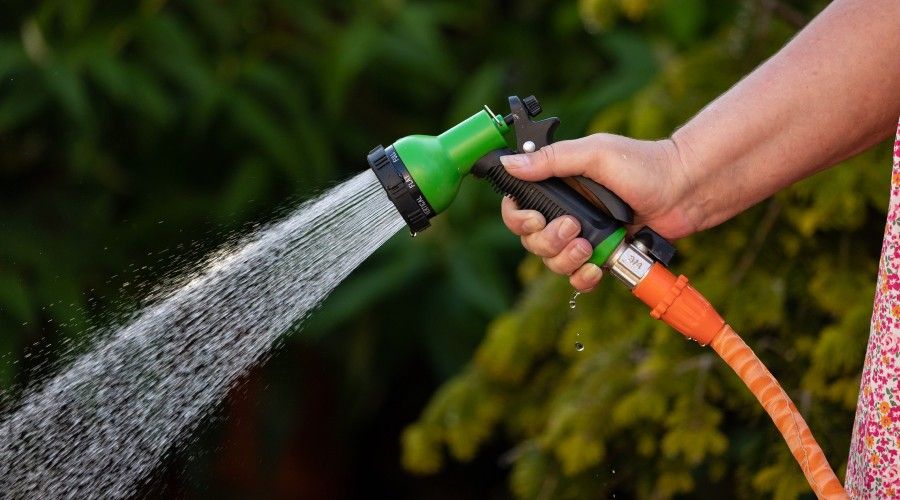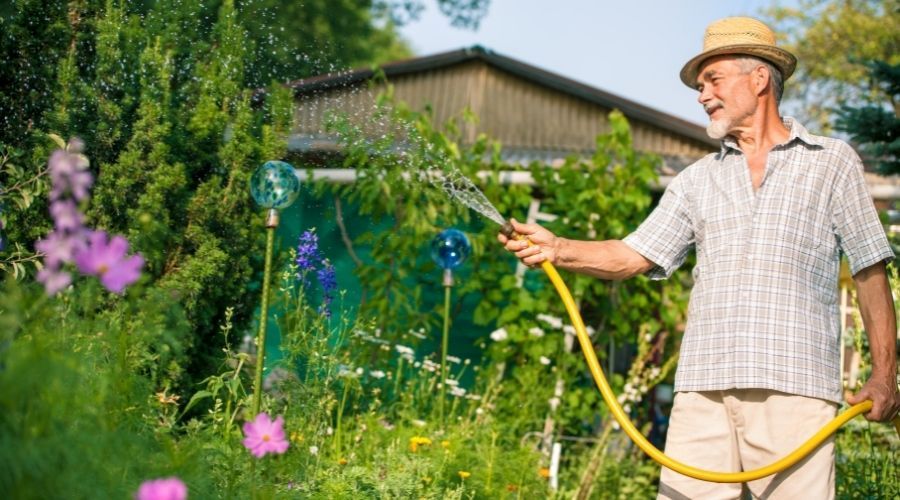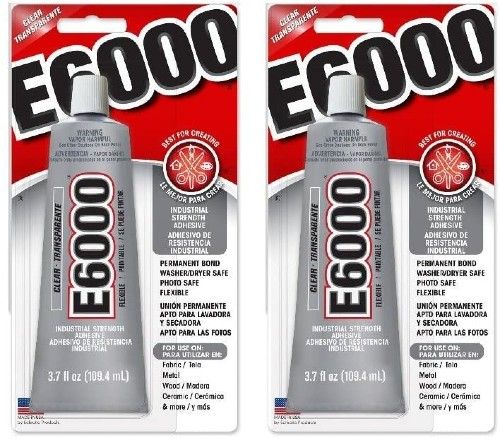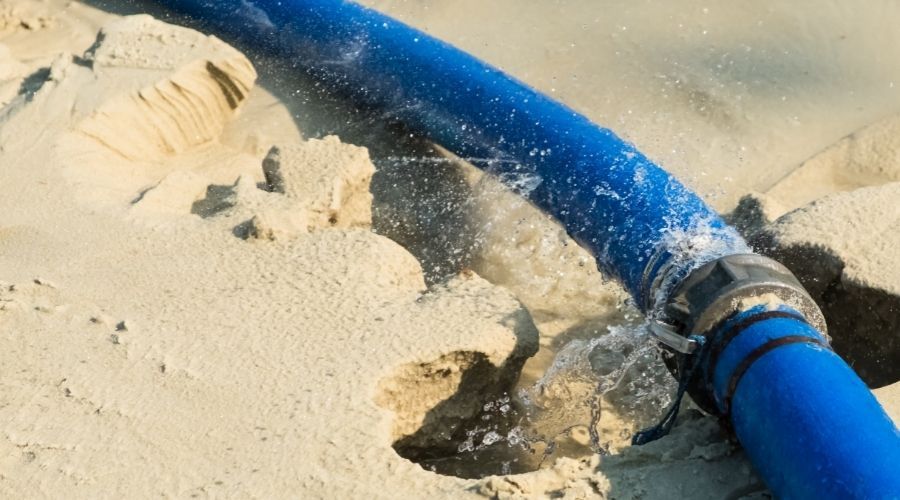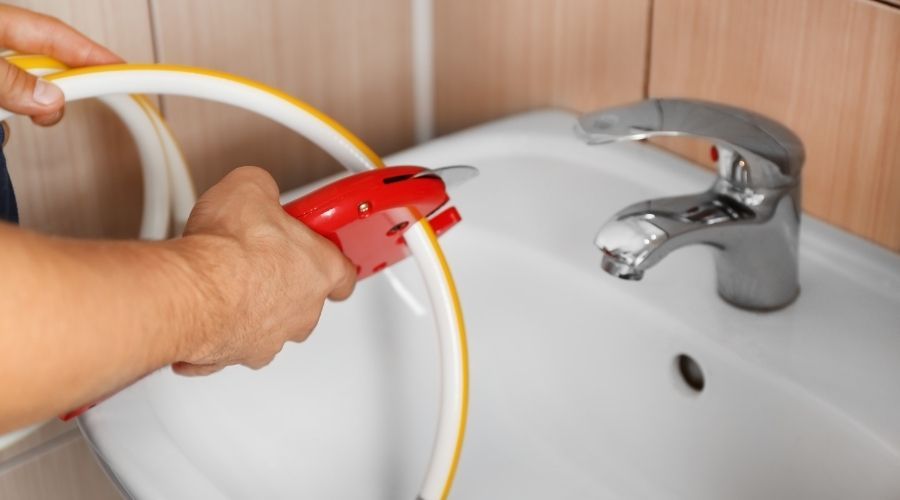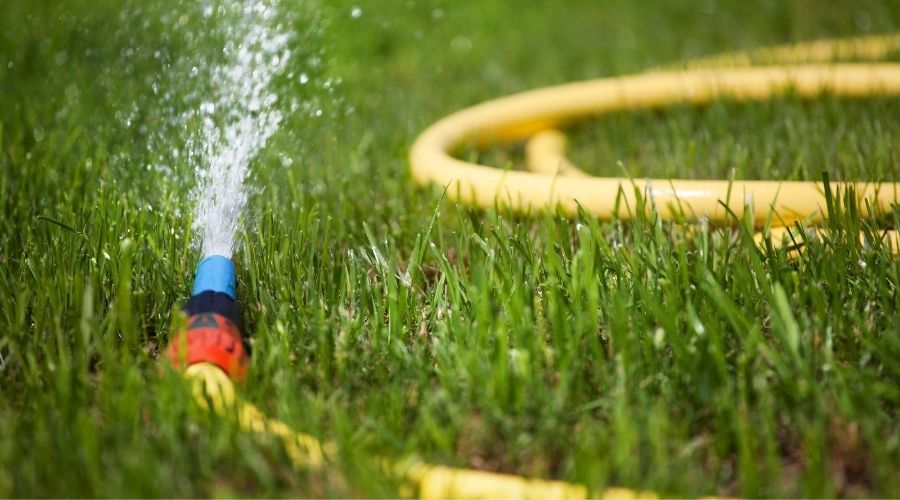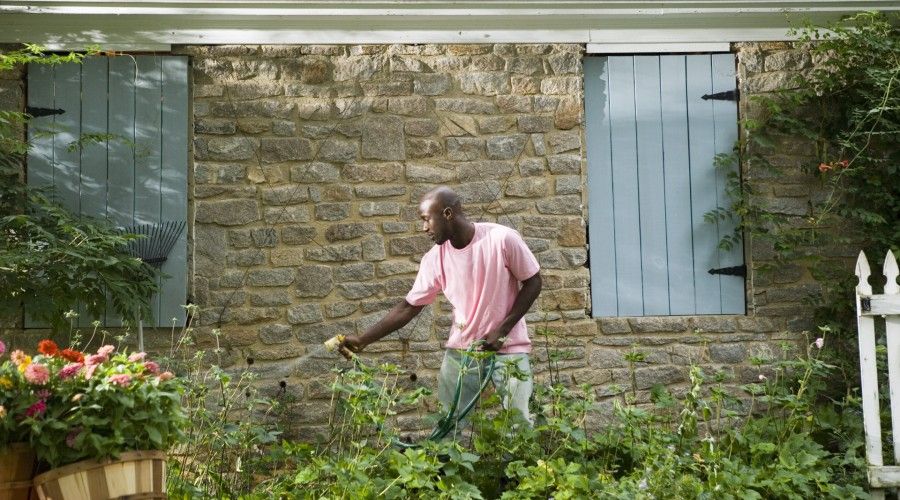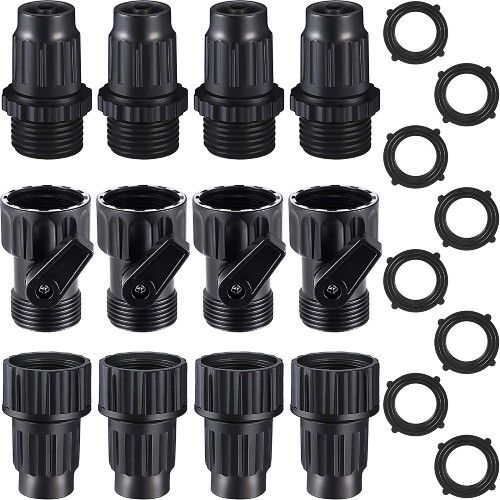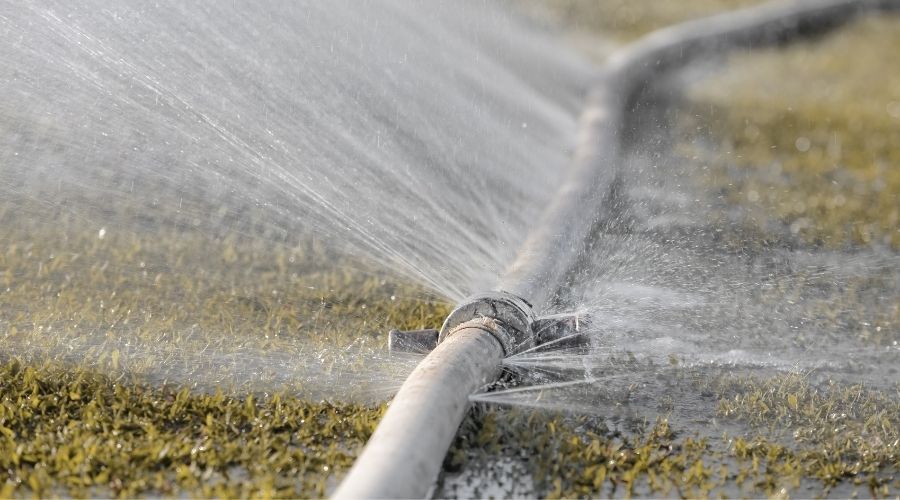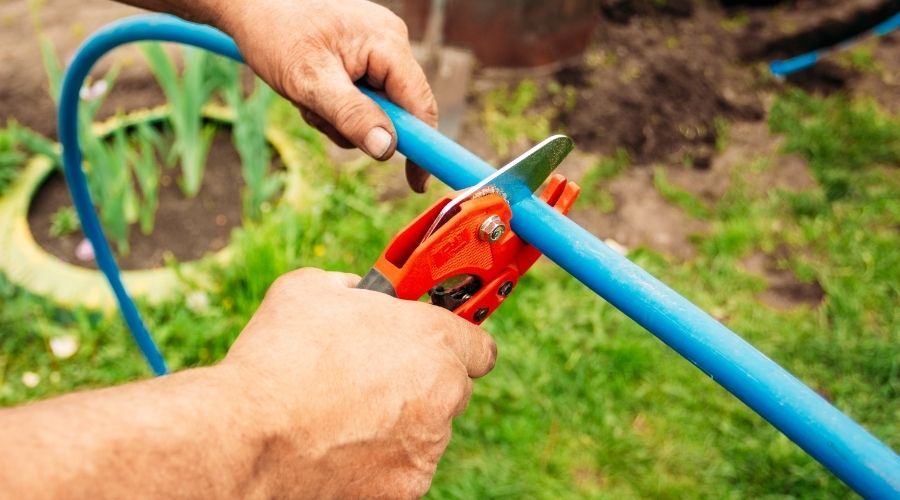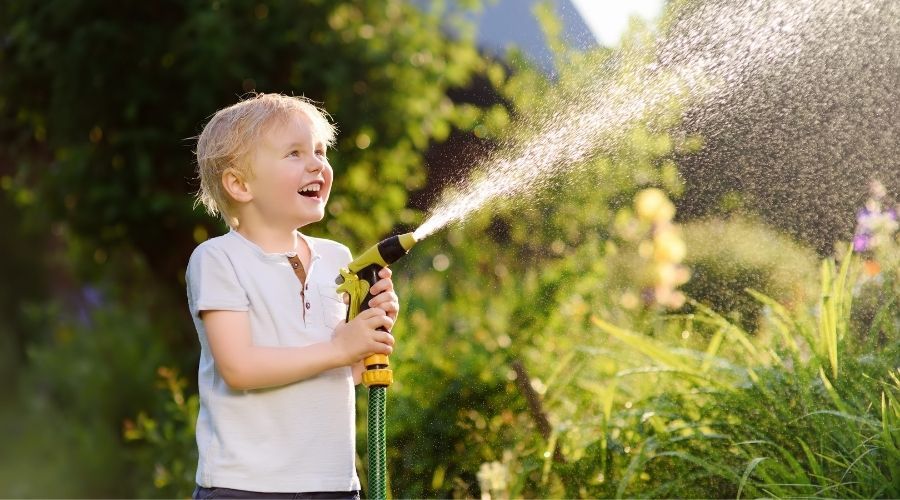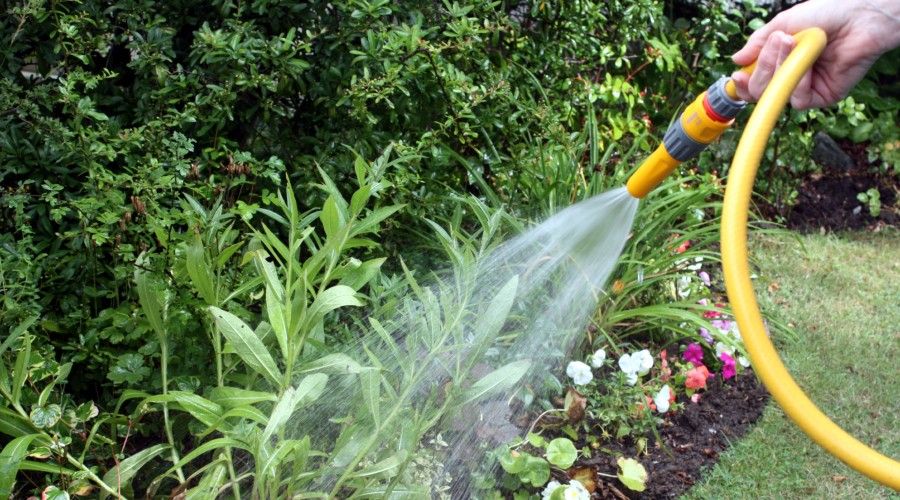You are busy tending to your garden when you notice a leak in your go-to expandable garden hose. While some people may instantly assume that it’s time to purchase a new hose, others find themselves wondering if a DIY fix is an option. Not only is it possible to tackle this as a DIY, but it’s also a great way to save money.
To help you get started, I’m going to share how to repair an expandable hose, looking at different potential problems and some ways to fix them. Don’t let the expandable nature of these products scare you off being the DIY God or Goddess that you know you can be!
Low-Cost Quick Fix with E6000 Glue
Image Credit: AlexRaths on Canva
What You Need
The first method that we are going to look at is considered a quick fix. It is not going to last over time, so this shouldn’t be considered a final solution. However, if you need to repair your hose for a short time until it is replaced or can be repaired with a more permanent fix, this is a great option. For this, you are going to need E6000 Craft Adhesive, a razor blade or precision craft cutting blade, self-adhesive tape, and supplies to sew the nylon cover when you are finished.
2-Pack of E6000 Craft Adhesive
A clear, flexible, and permanent industrial strength adhesive designed to work on a wide variety of surfaces will providing a durable and lasting bond.
Step One: Identify the Source of the Leak and Mark It
Image Credit: Nantapok on Canva
If you know that your hose has been leaking, the first step is to identify where the water is escaping. It can be difficult sometimes as the outer cover can conceal a rip or tear. Connect your hose to the water tap and turn it on. Carefully inspect the length of the garden hose until you find the leak. Using a small piece of tape, preferably a brightly colored tape in a different color than the hose itself, mark the spot for repair. Disconnect the hose from the water source and allow it to return to its original size before moving on with your repair.
Step Two: Expose the Area Needing Repair
Image Credit: pixelshot on Canva
Carefully cut back the outer protective layer of your expandable garden hose at the location of your leak. Be careful not to damage the inner tube during this process. Pull back the outer layer of durable nylon to expose the area that you will be working fully. You want to have easy access to the latex tubing as that is the part that you will be addressing first.
Step Three: Apply the Adhesive in Two Coats
Image Credit: NinaMalyna on Canva
When you have revealed the hole, apply a coat of E6000 directly onto the latex layers covering both the hole itself and the surrounding area. While the adhesive is still wet, take the time to smooth it out to prevent creating unnecessary bulk. Allow the adhesive to dry for 24 hours before applying a second coat. Wait for 24 to 48 hours before checking to ensure that the location of your repair is fully covered. To avoid any unnecessary bumps along the surface of your repaired hose, use your razor blade to carefully shave back any area where the adhesive has created an uneven surface.
Step Four: Cover with Self-Adhesive Tape and Repair the Outer Layer
Image Credit: Comstock Images on PicSpree
After the second coat has been allowed to fully dry, wrap a length of self-adhesive tape around the glued area to provide an additional layer of protection and security. When you’re finished, carefully sew the fabric of the outer nylon layer back together, being careful not to accidentally damage the inner tube with the needle.
Step Five: Test Your Repaired Hose with Water
When you have finished your repair, it’s time to test your hose to make sure that it has been fully repaired. Occasionally, a leak may be caused by multiple holes, and each will need to be addressed accordingly. Connect your hose to a water source and try it out. If you notice that the hose is still leaking, start the process again with the next damaged area.
If you are a visual learner, check out this video that shows the repair of a Brass Bullet Pocket Hose using this approach.
Permanent Fix with an Expandable Hose Repair Kit
What You Need
Whether you are experiencing a leak from a hole in the tubing of your garden hose or the connector located at one end of the hose, the best approach to repair your hose is with an expandable hose repair kit. These kits include host fittings such as barbed connectors and quick connectors, as well as any hose clamps needed to hold the fittings securely in place. In addition to the expandable hose repair kit, you will also need a sharp knife or garden shears and the supplies needed to sew the nylon cover.
Mudder Expandable Hose Repair Kit with Hose Shut-Off Valve and Rubber Gaskets
Enjoy the convenience of an easy-to-use hose shut off valve with this durable garden hose connector set designed to fit most ¾ inch garden hoses.
Step One: Identify the Source of the Leak and Clamp Hose
Image Credit: Toa55 on Canva
As with the low-cost quick fix mentioned above, the first step to complete your repair is to find the location where the water is leaking from the hose. If the hole is located somewhere along the body of the hose, keep the water running so that the hose is fully expanded and carefully clamp the hose on each side of the damaged area. If you notice that the damaged area is the end connector, you can move directly to step two.
Step Two: Remove the Damaged Portion of the Garden Hose
Image Credit: Artsiom Malashenko on Canva
If you repair a leak in the end connector, remove the damaged connector and roll the nylon cover back to reveal the area. If, on the other hand, you are fixing damage in the middle of the hose, carefully cut the nylon cover enough to reveal the area. Stick with a clean, straight cut that will be easy to sew back together when you are finished. Using a sharp knife or pair of garden shears, cut out the damaged portion of the hose. This will leave you with two separate sections of hose.
Step Three: Install the Hose Fittings
Image Credit: Maria Sbytova on Canva
Carefully clean the latex material on each side of the cut with soapy water and allow it to dry fully before proceeding. Following the directions provided with the repair kit, install your new fitting. It could involve inserting a barbed connector into the ends of the hose or using a collar-style connector that screws onto the end of the hose, holding everything in place.
If you are using a barbed connector, you can wrap the connector itself with plumbers tape a couple of times before inserting it into the hose to create a tight seal. The tape itself will expand when exposed to water, better preventing any unnecessary leaks.
Step Four: Repair the Nylon Outer Cover
Image Credit: Les Powell on Picspree
If you are repairing your hose with a barbed connector, you can then pull the outer cover of the hose back over your repaired area to protect the more fragile latex tube from damage in the future from direct sunlight or direct contact with objects like sharp rocks. Sew the nylon back together with a durable outdoor-rated thread or fishing line. If you used a collar-style connector or were repairing the end connection on your hose, you can skip this step.
Step Five: Test Your Repaired Hose with Water
As with the quick fix, you want to take the time to test your hose by connecting it to a water source once again to ensure that you have repaired everything correctly and there are no additional damaged areas. If you do find another leak, go back to step one with the new area.
This video will walk you through the full repair process using a collar-style expandable hose repair kit.
The Best Approach to Repair an Expandable Hose
If you have access to an expandable hose repair kit, that is the best solution for a long-term, reliable repair. It should be the end goal if you plan to use your garden hose long after the repair. However, if you are looking for a quick fix alternative while you are shopping for a new hose, the E6000 quick fix will buy you some time. Happy gardening!

